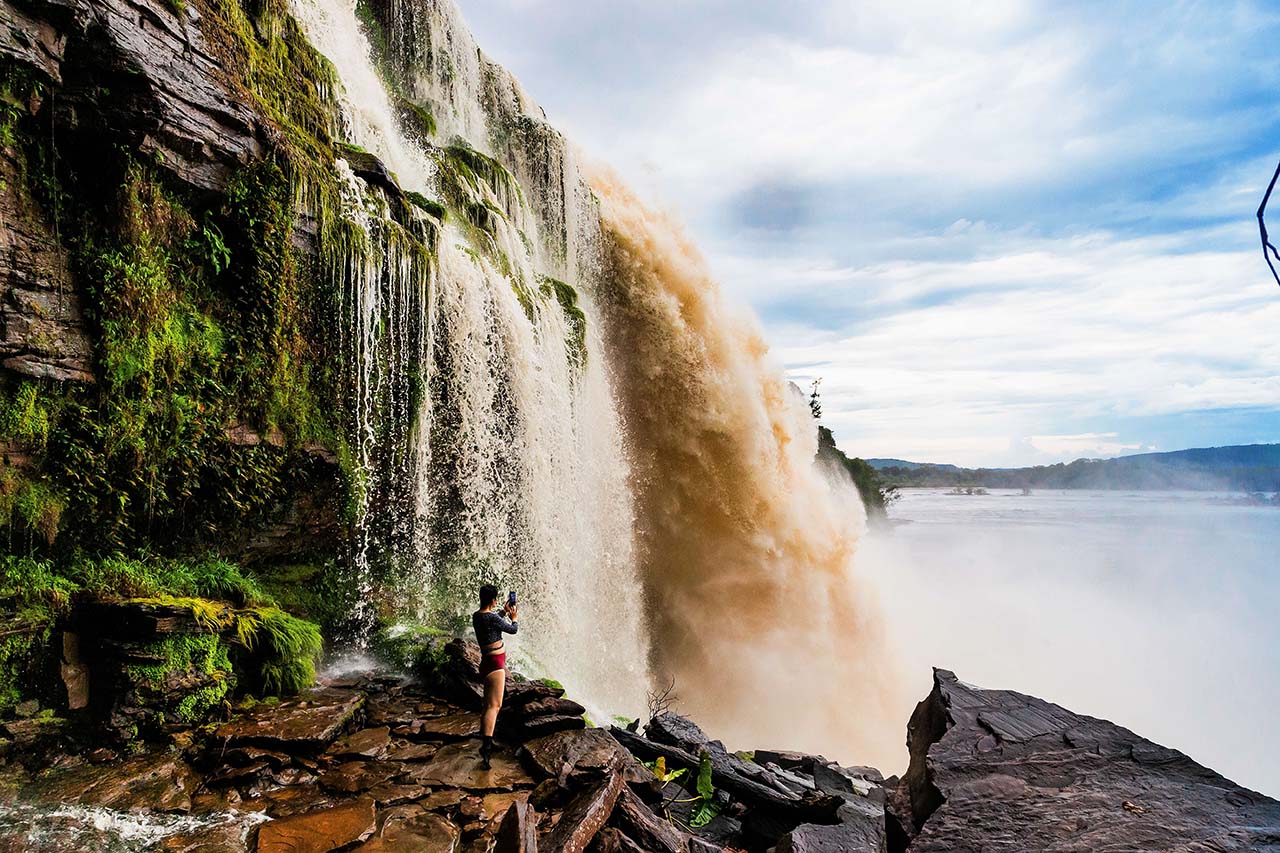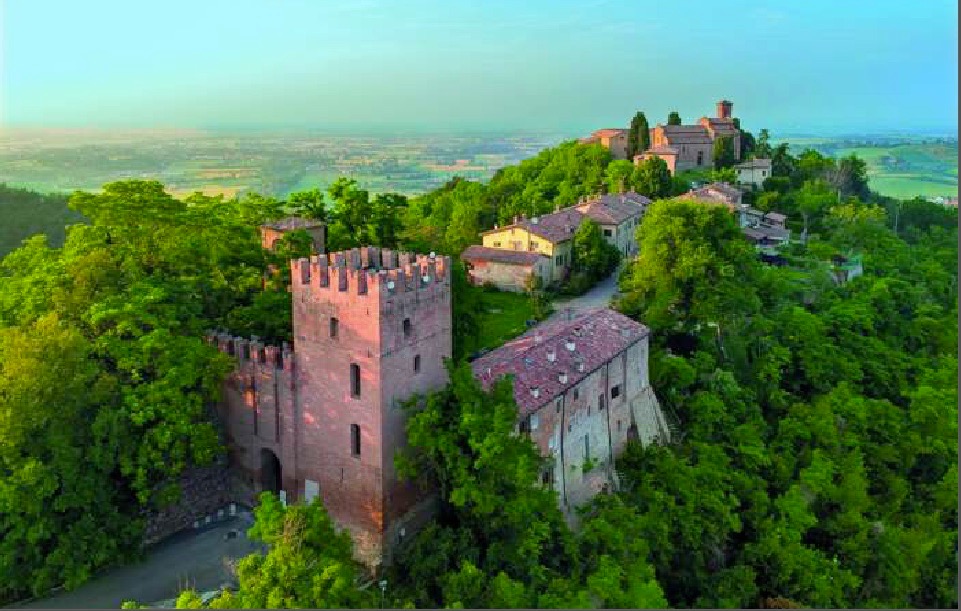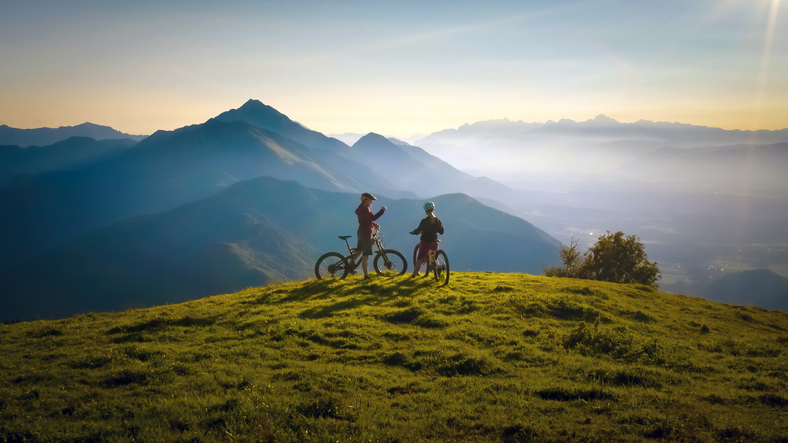The small plane flies over the green sea of the jungle and sneaks into the clouds around the tepuithe “houses of the gods”, granite mountains 500 million years old, with steep walls and flat tops, from which majestic waterfalls spring. Then he lands in the heart of Canaima National Park30 thousand square kilometers, a UNESCO heritage site inAmazon of Venezuela.
From the dawn of man until today, nothing has changed. The Venezuelan Amazon is the lost world of Arthur Conan Doyle delivered intact to the present day, one of nature's last treasure chests, a habitat for armadillos, anteaters, ocelots and jaguars, a landscape dreamlike like the blue butterflies or the scarlet dragonflies which look like flowers hanging from the foliage. The icon is Angel jumps, the highest waterfall in the world, millions of liters of water cascade for almost a kilometer from Auyantepui, along the Devil's Canyon.
Salto Ángel in Canaima National Park
Outpost of the conquest of the legendary white mirage, discovered in flight with his plane by the American gold prospector Jimmy Angel in 1933, these are the lodges on the edge of the immense lagoon overlooking the beaches, powder pink crescents which bathe the rust-colored waters. , perfect for total unplugged immersion: Spartan Canaima to magic Waka Wenaone of the most fascinating in Venezuela, a triumph of fragrant wooden furniture, four-poster beds and terraces from which you can admire Salto El Hacha.
A varied humanity – new Indiana Jones, researchers, romantics – prepares for the exciting adventure by tackling the expedition: it lasts a day, 140 kilometers From dawn to night along the Río Carrao, brave waves, currents and whirlwinds aboard curiara, traditional Indian canoes carved from tree trunks. The speedboat glides over the reddish waters between green islets.
When you encounter the rapids, you disembark on the shore, continuing on foot along the path in the forest in a vegetal chaos, a tangle of roots and mud, among the rare houses on stilts of the Pemón Indians. Then, once the danger has passed, we go back on board to the path that leads to the waterfall.
SEE ALSO: Unique trips to take in 2024


The landscape seems to have come out of a painting by Henri Rousseau, the customs officer. Everything quivers, throbs, screams, trembles under the green canopy of the trees: they look like plant sculptures from which vines hang, expanses of luxuriant orchids.
We take a break with a swim in the clear waters of the Well, happiness (Saropà Cupai), a lagoon embedded in the rock, you pass next to Isla Orquídea, you disembark at Isla Ratoncito.
Then, behind the guide who opens the path with the machete, you reach the viewpoint, at an altitude of 600 meters, with the natural swimming pool in which you can cool off after the excursion. The price is before your eyes. The scenography is magnificent: the water hits the ground and vaporizes, creating grandiose rainbows that curve and intertwine in the abyss between extravagant bodies of water, in the incessant roar.
You can also try other rushing waterfalls, such as Salto El Hacha, Wadaima, Golondrina, Ucaima. And the Salto full of adrenaline El Sapowhere we walk behind the curtain of water along an Indian path a little less than a meter wide and 180 meters long, advancing with great caution among the spray so as not to slip in the empty. The shower is guaranteed, the heartbeat too.
SEE ALSO: Exploring the world: 6 magnificent adventure trips to (re)discover yourself


Navigation of the Orinoco Delta
The trip to wild Venezuela offers other emotions. It's like sailing along the Delta Amacuro of the Great Cobra, as the natives call it: theOrinoco. A rushing river that flows for more than two thousand kilometers, considered for centuries by conquistadors, adventurers and pirates as the gateway to El Dorado, in South America, second only to the Amazon River in terms of length and flow of water, explored only in the 1950s. according to sources, on the border between Venezuela and Brazil.
An emerald green labyrinth, an oasis of biodiversity, with dozens of tributaries and hundreds of caños, that is to say canals, lagoons and swamps among the mangroves, brought to life by the stories of boatmen and fishermen , the people of the river.
Land and water mix in a fascinating puzzle, the horizons changing from year to year. In the dry season, orange sandbanks emerge, in the rainy season the Rios Negros and Blancos overflow, black and white streams tinged with sediments from the earth, flowing into the Delta and the Atlantic.
It's there country of the Waraothe canoeists who live in huts on stilts to fish and hunt, and the now rare curanderos, healers who practice rituals passed down by the ancestors. Everything is on the water, below and above: piranhas, men and alligators, anacondas, tapirs and pink dolphins, iguanas and parrots.
AND The lagoon of sweet dreams, comic strip created by Hugo Pratt where Corto Maltese, a modern Ulysses, crosses the river with an Indian on a slow boat, immersed in the exuberant and “damn beautiful” vegetation, accompanied by the rolling of distant drums, between fantasies and hallucinations.
The adventure begins Boca de Uracoaa remote village in Caño Manamo, where you will board the boat that will take you to Delta Lodge. The structure is similar to an Indian village on the Caño Guamal: made of wood on stilts, with mosquito nets instead of glass on the windows, from which breezes scented with flowers and aromatic plants enter.
The days are devoted to navigation to admire the sunrise and, along the Río Morichal, among the islets of hyacinths and floating water lilies carried by the current, orchids, bromeliads and ferns, parades of araguaney, the national tree with yellow bell-shaped flowers.
Moric palm trees are also reflected in the waters, from which the Indians obtain wood for building hammocks, boats, handicrafts and palm grapes, red and fleshy fruits, an ingredient of various dishes.
You enter a kaleidoscope of colors among fishermen in solitary canoes, yellow-blue macaws, egrets feasting on the banks, turtles sunning on logs, blue kingfishers. The sky turns shades of red as hundreds of red-feathered ibises take flight. After sunset, the dim lights of the lanterns illuminate the banks.
On the lodge's terrace overlooking the river, you can taste sudado de pollo criollo, flavored with potatoes and herbs and served on banana leaves, cachama, fried fish accompanied by rolls stuffed with vegetables, and cachapa , corn focaccia stuffed with cheese. . In the background the notes of the cuatro, the traditional guitar.


SEE ALSO: Cities, beaches, forests, waterfalls: what to see in Brazil and when to go
The Llanos savannah
Offer African atmospheres Llanos Savanna stretching as far as the eye can see, with rows of forest along streams and rivers. The journey begins at Barinasaccessible by plane from Caracas, then by car you enter the largest nature reserve in Venezuela, the kingdom of the llaneros, these adventurous and reckless gauchos who gallop on their horses through endless meadows. A Wild West that seems straight out of a Sergio Leone film.
Here and there the hatos, the big ganadero ranches, the breeders. As El Cedral in San Fernando de Apurea paradise of biodiversity where biologists and ornithologists come from all over the world to study an infinite number of species, but also an open-air gym where stressed managers, celebrities in search of privacy, career mothers cherish dreams of freedom in filling up with energy. in the exciting era of cowboys.
The sun illuminates the solitary land populated by iguanas and cacti that defy the sky like drawn swords in coppery hues.
“Here you get up close encounters with crocodiles and anacondas, chiguíres, also called capybaras, which are the largest rodents in the world, as well as caimans and rare giant anteaters, pumas and jaguars, ocelots and foxes “, he explains. Rafael Venegashistorical guide to the finca.
“Above all, 376 species of birds live in complete peace and quiet: toucans, eagles, hawks, storks, ibises, cormorants, vultures, wading birds. But also Virginia kites, kingfishers, Orinoco geese, egrets, savannah falcons, tiger herons, hummingbirds.” To be spotted during the numerous excursions – all exciting – by all-terrain vehicle or boat, along dirt roads, in rivers and swamps, in the morning or late afternoon to avoid the heat, for the most adventurous even when evening falls and night falls. arrives, to admire the nocturnal birds.
Or you can choose piranha fishing. It is practiced without a rod, by sticking a piece of meat on a hook attached to a large nylon thread, which must be thrown a few meters away and retrieved quickly, because the sharp teeth of these fish allow the bait to be stripped of the bait in seconds.
On full moon nights, silver lightning illuminates the golden expanses and wind-sculpted rocks of Hato El Cedral. Life stories, memories, desires alternate with songs around the crackling fire, where farm meats flavored with an appetizing blend of spices are roasted.
But the best part is the dark nights. In this country as remote as an island, the absence of light pollution allows you to admire the meteor shower in the black velvet sky. The planets are recognizable to the naked eye. A free cinemascope screening. The silence is broken only by the sounds of howler monkeys, toucans and parrots, as well as the moans of nocturnal birds. This is the soundtrack of the Llanos, a song of the Earth that never tires.




